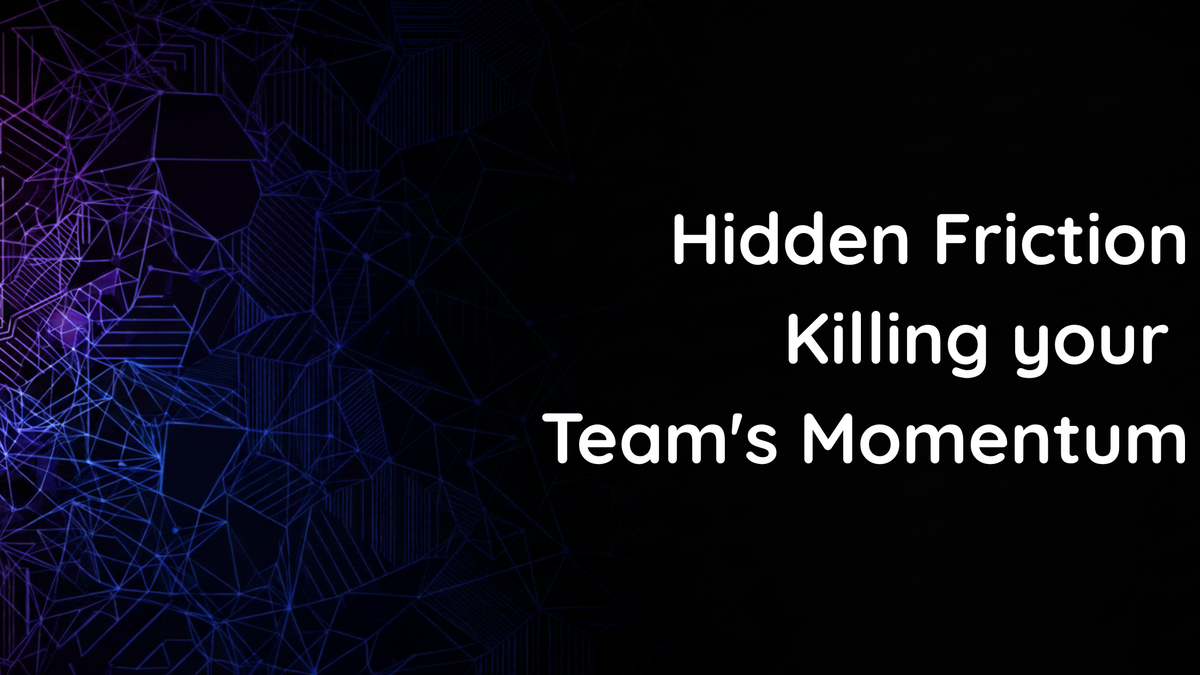Is your engineering workflow a death by 1,000 cuts?

As an engineering leader, you live with a frustrating paradox. You hire brilliant, motivated engineers, equip them with modern tools, and set clear goals. Yet, you still see projects dragging, deadlines slipping, and a creeping sense of frustration during stand-ups. It’s not a single, massive failure. It's something more insidious.
It’s death by a thousand cuts.
A two-minute wait for a local build to run. A half-day hunt for the right API documentation. A feature blocked for days waiting on a review from another team. Individually, these are minor annoyances. Collectively, they are the silent killers of momentum, innovation, and morale. Your team isn't underperforming; they're being bogged down by a low-effectiveness environment.
The Two Worlds: A Developer's Day
In his research on Maximizing Developer Effectiveness, technical director Tim Cochran paints a picture of two starkly different realities for developers.
- The High-Effectiveness World: A developer starts their day, pulls the latest code, makes a change, and gets validation from local tests in seconds. They find the documentation they need in a central portal, get a quick answer on Slack, and push a change to production the same day. They go home feeling accomplished.
- The Low-Effectiveness World: A developer starts by fighting false-positive production alerts. They wait hours for approvals, get blocked by other teams with no clear point of contact, and spend their day in status meetings instead of coding. They go home frustrated, having made little real progress.
Which world does your team live in? For too many, it’s the second. And the cost isn't just delayed features—it's the risk of burning out and losing your best talent.
The Real Enemy: Broken Feedback Loops
The root of this problem lies in something we rarely measure: feedback loops. Every time an engineer writes code, they ask a series of questions:
- Did my change work? (Running a unit test)
- Does it integrate with the rest of the system? (Running an integration test)
- Does it meet our quality standards? (Submitting a pull request)
- Was it useful to the customer? (Analyzing post-release metrics)
In effective organizations, the answers to these questions are fast, simple, and automated. In struggling organizations, they are slow, manual, and painful.
The most critical—and most overlooked—are the micro-feedback loops. These are the tiny cycles developers run hundreds of times a day. When a local build takes two minutes instead of 15 seconds, it’s not just a 105-second delay. It’s an invitation for distraction. The developer checks email, opens Slack, or grabs a coffee. Their state of flow is broken, and research shows it can take over 20 minutes to get it back.
That two-minute delay just cost you half an hour of deep, focused work. Multiply that across your entire team, every single day. The compounding effect is staggering.
You Can't Fix What You Can't See
You know this is happening. The challenge is that these "thousand cuts" are invisible. They don't show up neatly in a Jira report or a project plan. They are buried in the day-to-day workflow, scattered across GitHub, Slack, CI/CD pipelines, and project management tools.
This is the core visibility problem every engineering leader faces. Standard DORA metrics are great for telling you what happened (lagging indicators), but they don't tell you why it's happening. To truly drive excellence, you need to see the leading indicators—the friction in your team's daily feedback loops.
This is precisely why we built EvolveDev.io.
Our platform was designed to solve this exact problem. By integrating with the tools your team already uses—GitHub, Jira, Slack, and more—EvolveDev automatically surfaces the data you need to spot these hidden bottlenecks.
- Visibility Challenges: Instead of endless status meetings, our dashboards give you a holistic view of where work is slowing down. Are code reviews taking too long? Is PR cycle time creeping up? EvolveDev puts that data at your fingertips.
- Delivery Slowdown: Pinpoint the exact stages in your development lifecycle that are causing delays. Our investment dashboards show you where your team's effort is really going—new features, bug fixes, or technical debt—so you can have data-driven conversations about priorities.
- Developer Frustration: Don't wait for exit interviews to hear about process friction. By visualizing workloads and identifying process blockers, you can proactively improve the developer experience, keeping your team happy and engaged.
Your team doesn't need to work harder. They need an environment that removes friction and lets them do what they do best: build great software. Stop letting your team suffer from a death by a thousand cuts.
Ready to find and fix the hidden friction in your engineering process?
See how EvolveDev.io can give you the visibility you need to drive real improvement.





